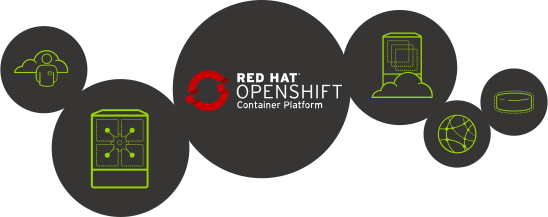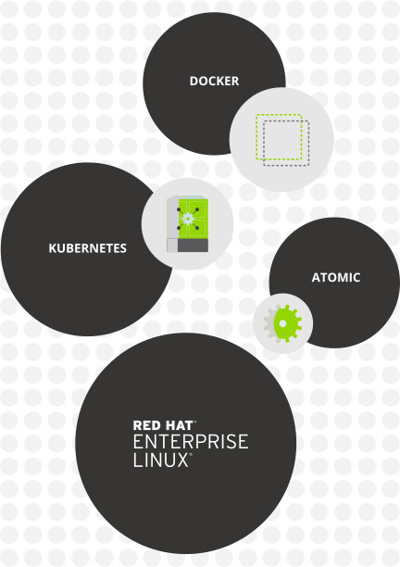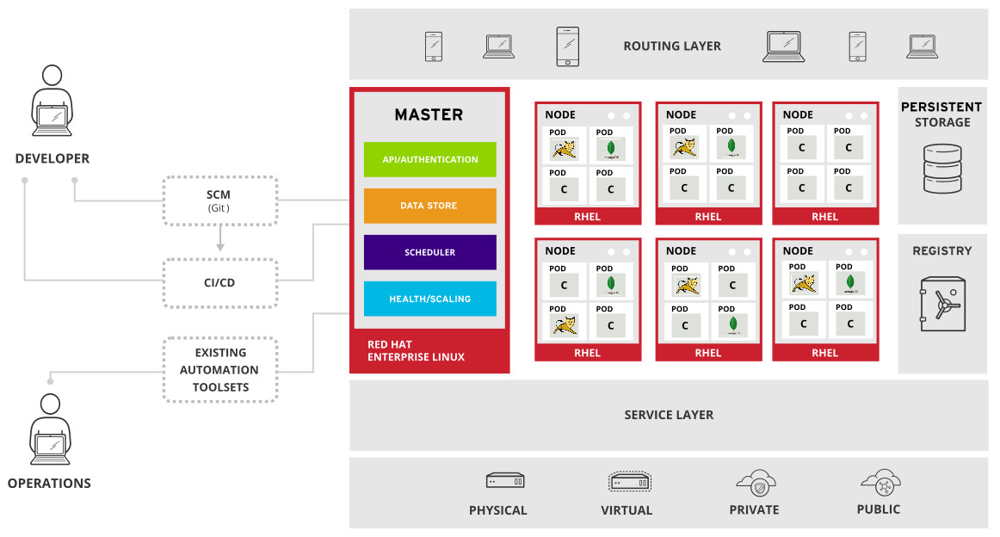Red Hat OpenShift Container Platform 3.4 With Dynamic Storage Provisioning
Kubernetes platform to simplify storage for containerized applications, streamline multi-tenant deployments in hybrid cloud computing
This is a Press Release edited by StorageNewsletter.com on January 27, 2017 at 2:42 pmRed Hat, Inc. announced the availability of OpenShift Container Platform 3.4, the latest version of its container application platform.

The company helps organizations like ‘Discovery Health and Pioneer’ better embrace technologies, such as Linux containers, that can deliver business applications and services without sacrificing existing IT investments. OpenShift Container Platform 3.4 provides a platform for this innovation while retaining a focus on existing mission-critical workloads, offering dynamic storage provisioning for both traditional and cloud-native applications and multi-tenant capabilities that can support multiple applications, teams and deployment processes in a hybrid cloud environment.

As a contributor to both the docker and Kubernetes projects, the latest version of the company’s container application platform provides an enterprise-ready version of Kubernetes 1.4 and the docker container runtime. This helps customers to more quickly roll out services with the backing of a stable, reliable and more secure enterprise platform powered by the latest version of RHEL, the firm’s enterprise Linux platform.
OpenShift Container Platform 3.4 integrates the architectures, processes and services to enable delivery of critical business applications, from traditional and legacy applications to cloud-native and containerized workloads.
New capabilities in the latest version include:
-
Next-level container storage with support for dynamic storage provisioning, allowing multiple storage types to be provisioned, and multi-tier storage exposure via quality-of-service labels in Kubernetes. Container-native storage, enabled by firm’s Gluster Storage, which supports dynamic provisioning and push button deployment, enhances the user experience running stateful and stateless applications on OpenShift Container Platform. It makes the consumption and provisioning of application storage for developers to use. With Gluster Storage, OpenShift customers get the added benefit of a software-defined, highly available and scalable storage solution that works across on-premises and public cloud environments and one that can be more cost efficient than traditional hardware-based or cloud-only storage services.
-
Enhanced multi-tenancy through more simplified management of projects, a feature powered by Kubernetes namespaces, in a single Kubernetes cluster. Multiple developer teams, applications and lifecycle environments can run fully isolated and share resources on a single Kubernetes cluster in OpenShift Container Platform. It adds the capacity to search for projects, project details, manage project membership and more via a more streamlined web console, making it easier for users to work with multiple projects across dispersed teams. These multi-tenancy capabilities enable enterprise IT organizations to provide application development teams with their own cloud-like application environment to build and deploy customer-facing or internal applications using DevOps processes that are isolated from one another.
-
Hybrid cloud reference architectures for running OpenShift Container Platform on OpenStack, VMware, Inc., Amazon Web Services (AWS), Google Cloud Engine and Microsoft Azure. These guides help walk a user through deploying a stable, fault-tolerant, production-grade environment that uses the power of OpenShift Container Platform across public and private clouds, VMs and bare metal.
Click to enlarge
Forming the orchestration backbone of OpenShift Container Platform 3.4 is Kubernetes 1.4, which is maintained by the open source Kubernetes Project community. Kubernetes 1.4 features alpha support for expanded cluster federation APIs, a feature that can enable multiple clusters federated across a hybrid environment and a capability that the company views as a key component to enabling hybrid cloud deployments in the enterprise. As with all of firm’s enterprise-ready Linux container solutions, the latest version of OpenShift offers community innovation as hardened, production-grade features.
Beyond the software, OpenShift Container Platform 3.4 is also backed by the company’s global support, helping enterprises to take advantage of the innovation offered by Kubernetes while knowing that the technology is supported by on-call technical expertise.
Supporting Linux containers across hybrid cloud
Firm’s expanded container portfolio spans private and fully managed public cloud offerings, supporting traditional and cloud-native applications, and different aspects of the application development process in one solution that can span multiple infrastructures and enable containers-as-a-service. This includes local, lab and production environments running in the data center or public cloud, managed by customers or managed by the company. Additionally, the firm also offers a suite of no-cost developer-focused container tools, including a localized offering of OpenShift Container Platform, through the Container Developer Kit. Company’s container-optimized solutions span storage, application services and management technologies, in addition to these no-cost development tools.
OpenShift Container Platform 3.4 is available via the firm’s customer portal. Cloud Suite will also feature the latest container application platform update as a pre-integrated offering alongside company’s OpenStack Platform, Virtualization and CloudForms.
Ashesh Badani, VP and GM, OpenShift, Red Hat, said: “While Linux containers represent an innovative future for enterprise applications, traditional and legacy applications remain critical to the modern business. Red Hat OpenShift Container Platform 3.4 can meet the needs of these existing applications while providing the tools and services to drive cloud-native application creation and deployment. The latest version of our flagship container application platform goes a step beyond simply creating and deploying applications by addressing the growing storage needs of both stateful and stateless applications across the hybrid cloud, allowing for coexistence of modern and future-forward workloads on a single, enterprise-ready platform.“
Neil Adamson, CIO, The Vitality Group, a Discovery’s subsidiary, said: “The Vitality program is a global initiative and rewards program that encourages healthy behavior for insurance customers. This program is a key component of how we envision the future of health, but advanced services for our customers can only be delivered by embracing next-generation technologies, particularly those provided through the open source communities that drive Linux containers, Kubernetes and IoT. Red Hat OpenShift Container Platform provides us with the best of these communities while still delivering a stable, more secure foundation; we’re able to reap the benefits of open source innovation while lessening the risks often inherent to emerging technologies.“
Kazuhiro Miyamoto, GM, development department, information service platform center, product management division, Pioneer Corporation, said: “We have adopted a cloud environment based on Red Hat OpenShift Container Platform and IBM cloud infrastructure services to assist the development and operation of our latest car navigation system, ‘Super Route Finder.’ As the Super Route Finder also supports the latest models released in 2016, there was concern about the growing concentration of access requests from thousands to tens-of-thousands units. With the expectation of the numbers of users and various kinds of containers increasing, Red Hat OpenShift Container Platform enables us to implement scalable allocation of containers, and readily manage respective container applications more effectively.“















 Subscribe to our free daily newsletter
Subscribe to our free daily newsletter

